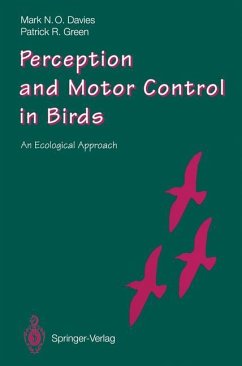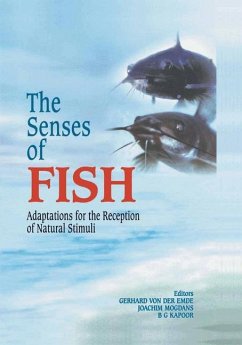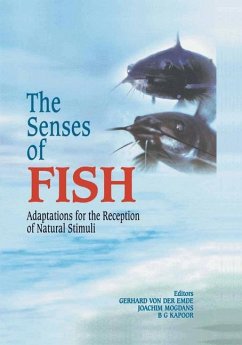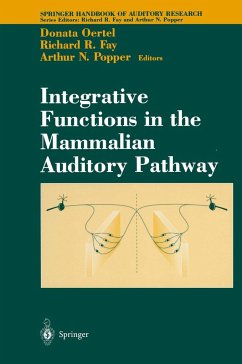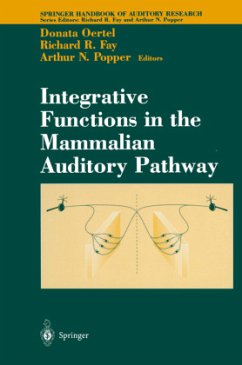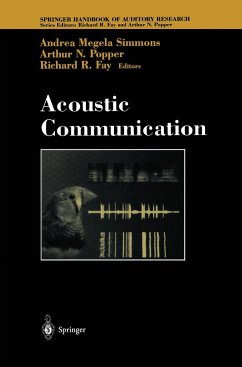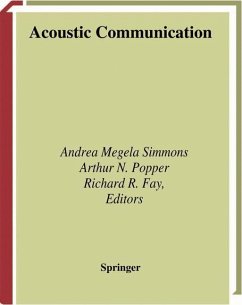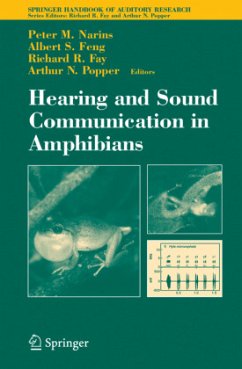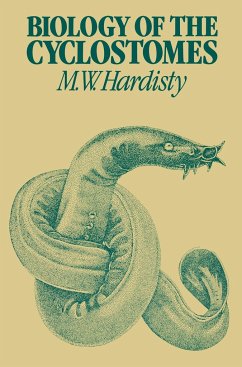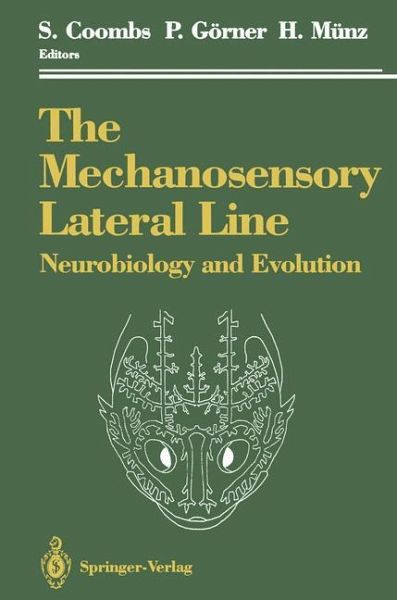
The Mechanosensory Lateral Line
Neurobiology and Evolution
Herausgegeben von Coombs, Sheryl; Görner, Peter; Münz, Heinrich
Versandkostenfrei!
Versandfertig in 6-10 Tagen
77,99 €
inkl. MwSt.

PAYBACK Punkte
39 °P sammeln!
This volume represents the published proceedings of an international conference on the Neurobiology and Evolution of the Mechanosensory Lateral Line System held August 31 to September 4, 1987, at the Center for Interdisciplinary Research at the University of Bielefeld, West Germany. The goal of this confer ence was to bring together researchers from all over the world to share informa tion about a major aquatic sensory system, the evolution and function of which have largely remained an enigma since the 18th century. The "lateral line" or "lateralis" system has been used as an umbrella term to...
This volume represents the published proceedings of an international conference on the Neurobiology and Evolution of the Mechanosensory Lateral Line System held August 31 to September 4, 1987, at the Center for Interdisciplinary Research at the University of Bielefeld, West Germany. The goal of this confer ence was to bring together researchers from all over the world to share informa tion about a major aquatic sensory system, the evolution and function of which have largely remained an enigma since the 18th century. The "lateral line" or "lateralis" system has been used as an umbrella term to describe what originally (without the aid of modern anatomical techniques) looked like a series of pits, grooves, and lines on the head and trunk of fishes and some amphibians. For at least the past 30 years, however, it has been recognized that the lateralis system comprises not one, but at least two functional classes of receptors: mechanoreceptors and electroreceptors. The relative ease with which the appropriate stimulus could be defined and measured for the electroreceptive class has resulted in an explosion of information on this submodality during the past 20 years. As a result, there is little ambiguity about the overall function of the electrosensory system, now generally regarded as an independent system in its own right. A similarly clear definition for the function of the mechanosensory lateralis system has not been as forthcoming.






